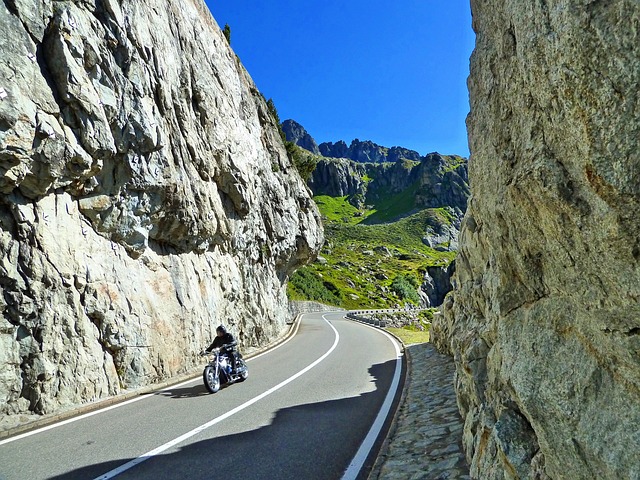Nestled in the lap of the Himalayas, the Roopkund Trek in Uttarakhand is a spellbinding adventure that combines the thrill of high-altitude trekking with the allure of an ancient mystery. This trek, famous for the mysterious Skeleton Lake, offers trekkers an experience that is both physically challenging and profoundly rewarding. If you’re an adventure enthusiast or someone who loves unraveling the secrets of the past, the Roopkund Trek should be on your bucket list.
The Allure of Roopkund
Roopkund, also known as the Skeleton Lake, is situated at an altitude of about 16,500 feet in the Chamoli district of Uttarakhand. The lake is shrouded in mystery due to the hundreds of human skeletons that are visible when the snow melts. The bones are believed to date back to the 9th century, and various theories abound about who these people were and what led to their demise. Some suggest they were pilgrims caught in a sudden hailstorm, while others think they were part of a royal entourage.
But Roopkund is not just about the eerie skeletons. The journey to the lake takes you through verdant forests, gushing rivers, expansive meadows, and snow-covered landscapes, making it a trekker’s paradise.
Best Time to Visit
The best time to embark on the Roopkund Trek is during the pre-monsoon months of May and June, or post-monsoon, in September and October. During these periods, the weather is relatively stable, and the views are spectacular. The monsoon season (July to August) should be avoided due to the risk of landslides and slippery trails.
The Trekking Route
The Roopkund Trek generally spans over seven to nine days, depending on the specific itinerary and pace of the trekking group. Here’s a detailed breakdown of the classic route:
Day 1: Arrival at Lohajung
The trek begins at Lohajung, a small village that serves as the base camp for the Roopkund Trek. At an altitude of around 7,700 feet, Lohajung offers stunning views of the surrounding peaks. Trekkers usually spend the first night here to acclimatize to the altitude.
Day 2: Lohajung to Didna Village
The trail from Lohajung to Didna Village is a gentle ascent through oak and rhododendron forests. This initial stretch is relatively easy and serves as a good warm-up for the days ahead. The distance covered is around 8 km, and it takes about 5-6 hours to reach Didna Village.
Day 3: Didna Village to Ali Bugyal
On the third day, the trail becomes more challenging as you climb towards Ali Bugyal, one of the largest high-altitude meadows in Asia. This part of the trek is about 10 km long and takes approximately 6-7 hours. The views from Ali Bugyal are breathtaking, with vast stretches of green meadows against the backdrop of snow-capped peaks.
Day 4: Ali Bugyal to Ghora Lotani
The trek from Ali Bugyal to Ghora Lotani is relatively easy, taking about 3-4 hours. The trail continues through the lush meadows, offering panoramic views of Trishul and Nanda Ghunti peaks. This day allows trekkers to enjoy the beauty of the high-altitude landscape without too much exertion.
Day 5: Ghora Lotani to Bhagwabasa via Kalu Vinayak
This day involves a steep climb to the Kalu Vinayak temple, which stands at an altitude of about 14,000 feet. The trail is rugged and challenging, taking around 4-5 hours to reach Bhagwabasa. The campsite at Bhagwabasa is rocky and cold, but the views of the surrounding peaks make it worth the effort.
Day 6: Bhagwabasa to Roopkund
The sixth day is the most challenging and rewarding part of the trek. Trekkers start early in the morning to reach Roopkund Lake, a distance of about 5 km from Bhagwabasa. The climb is steep and demanding, but the sight of the mysterious Skeleton Lake is awe-inspiring. After spending some time at the lake, trekkers descend to Bedni Bugyal for the night, covering a total distance of around 15 km.
Day 7: Bedni Bugyal to Wan and drive to Lohajung
The final day of trekking involves descending to Wan Village, which takes about 4-5 hours. From Wan, a vehicle takes the trekkers back to Lohajung, marking the end of the trekking adventure.
Preparing for the Trek
The Roopkund Trek is classified as a moderate to difficult trek, so physical fitness is crucial. Trekkers should engage in regular cardiovascular exercises, strength training, and practice long hikes to build stamina. Additionally, mental preparedness is equally important, as the high altitude and rugged terrain can be challenging.
Essential gear for the trek includes:
Good quality trekking shoes: Preferably waterproof with a strong grip.
Layered clothing: To varying weather conditions.
Trekking poles: To help navigate steep and uneven terrain.
Sleeping bag and tent: If not provided by the trekking agency.
First aid kit: Including altitude sickness medication.
Backpack: With rain cover and adequate capacity.
Experiencing the Culture
One of the unique aspects of the Roopkund Trek is the opportunity to experience the local culture. The villages along the trek, like Lohajung, Didna, and Wan, offer glimpses into the traditional lifestyle of the Garhwali people. Trekkers can interact with locals, savor regional cuisine, and learn about the customs and traditions that have been preserved for centuries.
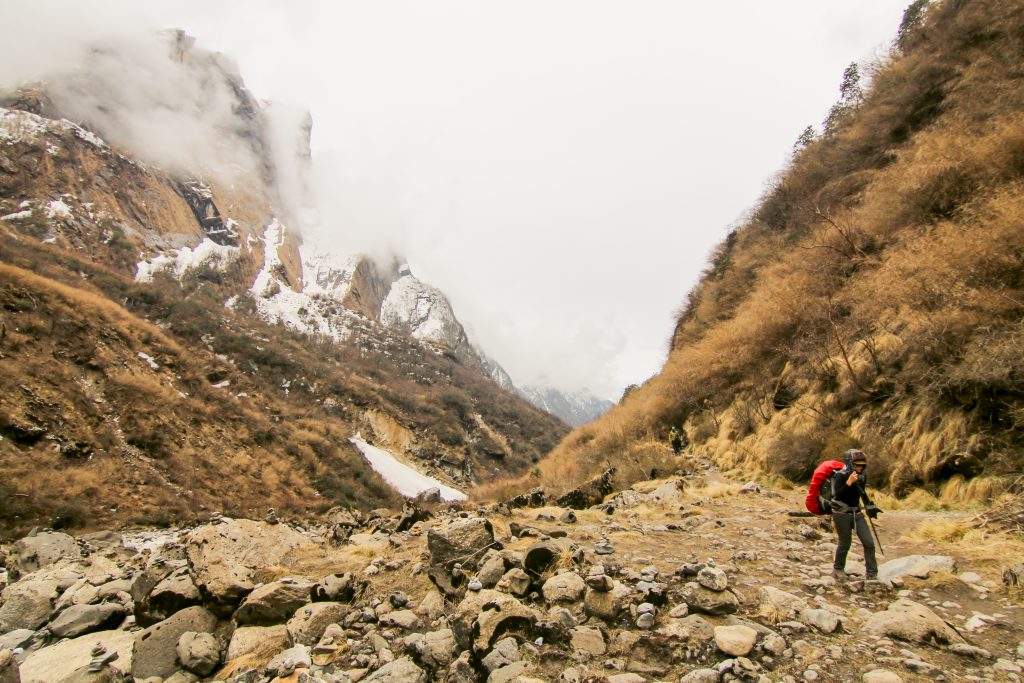
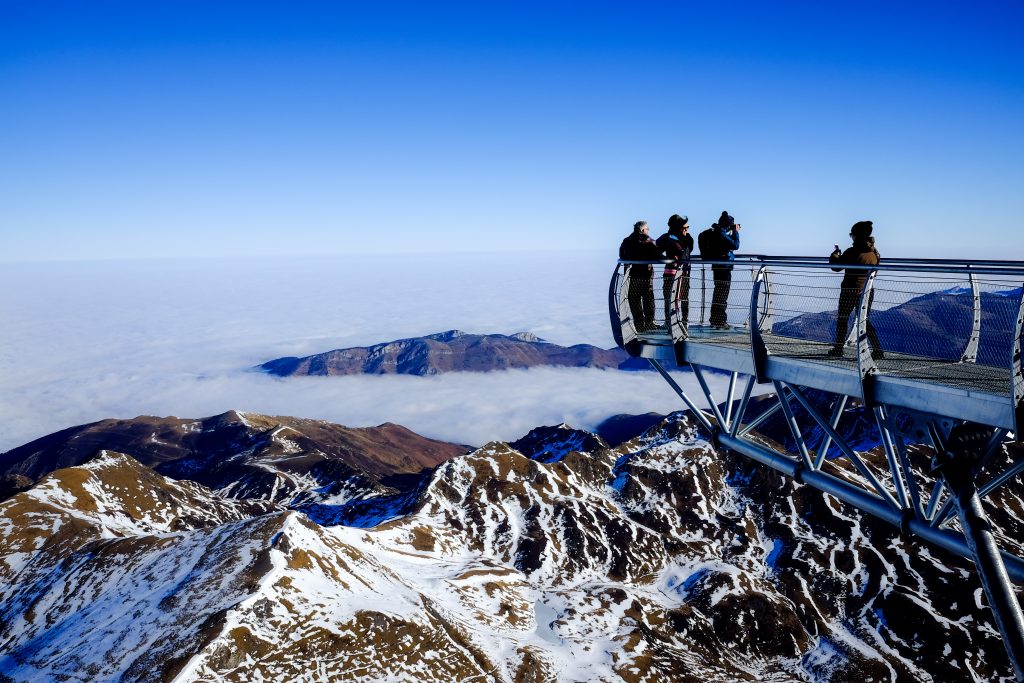
The Enigmatic Skeleton Lake
No description of the Roopkund Trek is complete without delving into the mystery of the Skeleton Lake. The skeletons, first discovered by a forest ranger in 1942, have fascinated scientists and trekkers alike. Various studies have suggested that the skeletons date back to the 9th century and belong to a group of pilgrims who perished in a severe hailstorm. The well-preserved state of the skeletons, along with the remnants of clothes and jewelry, adds to the lake’s eerie allure.
Embark on the Chadar Trek: An Icy Adventure in Ladakh:
If you crave an adventure that takes you to the edge of the world, where landscapes are otherworldly and every step is a test of endurance, the Chadar Trek in Ladakh is the journey for you. This trek, also known as the Frozen River Trek, involves walking on the icy surface of the Zanskar River, surrounded by the towering walls of a deep gorge. This trek is not just about reaching a destination; it’s about experiencing a unique way of life, challenging yourself, and finding beauty in the harshest conditions.
The Frozen Pathway: What is the Chadar Trek?
The Chadar Trek gets its name from the blanket of ice that forms over the Zanskar River during the winter months. “Chadar” means “sheet” in Hindi, and the trek involves traversing this icy sheet, which can be as slick as glass or covered in a light dusting of snow. The trek typically spans 8-9 days and covers a distance of approximately 62 kilometers (about 38.5 miles). It is one of the most challenging treks in India due to the extreme cold, the unpredictable ice conditions, and the remote location.
When to Go: The Best Time for the Chadar Trek
The Chadar Trek is best undertaken in January and February when the ice is thick and stable. During these months, temperatures can plummet to as low as -30°C (-22°F) at night, and the days are only slightly warmer. Despite the cold, this period offers the most stable conditions for walking on the ice.
The Journey Begins: Reaching Leh
Leh is accessible by air from major cities like Delhi. Flying into Leh is an experience in itself, with the plane navigating between snow-covered peaks before landing in the valley. Arriving a few days early is advisable to acclimatize to the high altitude (Leh sits at 3,500 meters or about 11,500 feet above sea level).
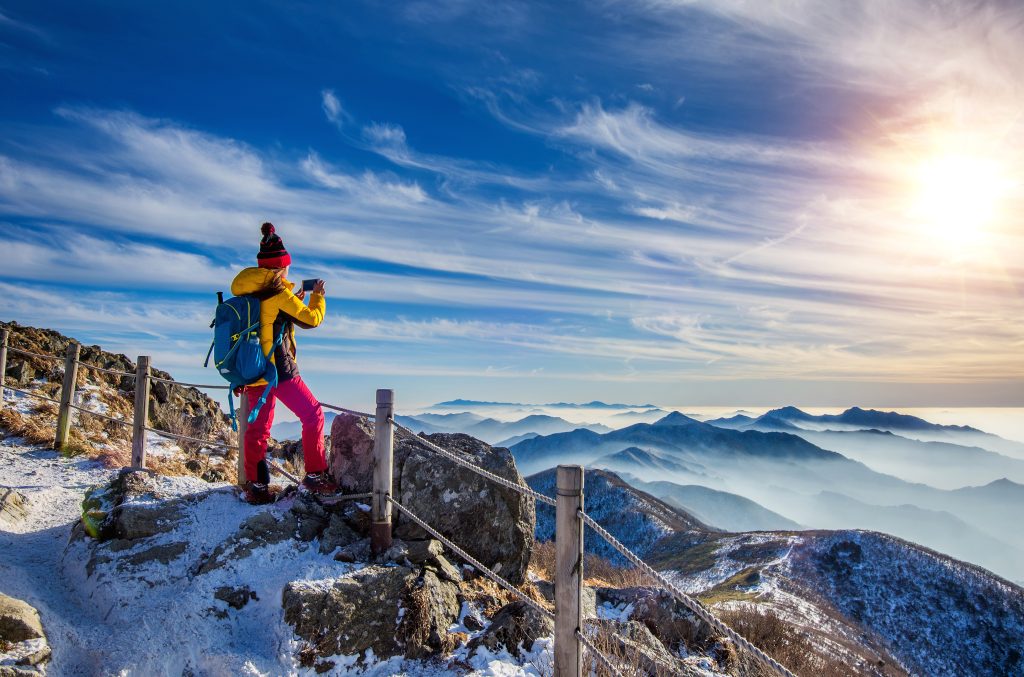
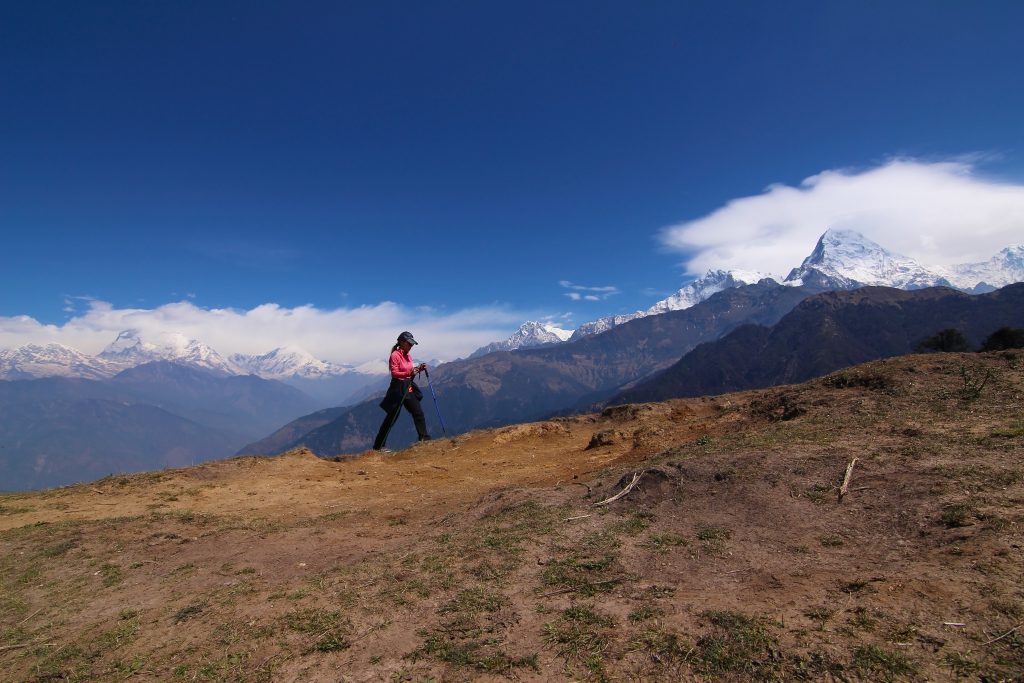
Day 1: Leh to Chilling and Trek to Tilad Do
The journey begins with a drive from Leh to Chilling, a small village where the Zanskar River starts freezing. From Chilling, the trek to Tilad Do, the first campsite, is relatively short and serves as an introduction to walking on ice. The sight of the frozen river beneath your feet and the towering cliffs on either side is breathtaking.
Day 2: Tilad Do to Gyalpo
The trek from Tilad Do to Gyalpo covers around 12 kilometers and takes about 6-7 hours. As you walk, you’ll notice the ice patterns changing constantly, with some sections being perfectly smooth and others having cracks or bubbles trapped beneath the surface. The campsite at Gyalpo is set amidst tall cliffs, offering some protection from the wind.
Day 3: Gyalpo to Tibb Cave
On the third day, the trek continues to Tibb Cave, a distance of about 14 kilometers. The scenery along the way is stunning, with frozen waterfalls, icy stalactites hanging from the cliffs, and occasionally, sections where the river remains unfrozen and flows beneath the ice. Tibb Cave, a natural shelter formed by overhanging rocks, serves as the campsite.
Day 4: Tibb Cave to Nerak
The trek from Tibb Cave to Nerak is one of the highlights of the Chadar Trek. Covering around 13 kilometers, the route takes you past some of the most spectacular frozen waterfalls. The approach to Nerak village is marked by a large frozen waterfall, one of the most iconic sights of the trek. The campsite at Nerak is colder due to the higher altitude and narrower gorge.
Day 5: Nerak to Tibb Cave
After spending the night at Nerak, the return journey begins. The trek back to Tibb Cave offers a different perspective of the route, with the changing light and ice formations making the landscape look new and different.
Day 6: Tibb Cave to Gyalpo
Retracing your steps, the trek from Tibb Cave to Gyalpo is a reminder of the challenges overcome and the beauty witnessed. By now, trekkers are usually more accustomed to the cold and the terrain, making the return journey slightly easier.
Day 7: Gyalpo to Tilad Do and Drive to Leh
The final day of trekking leads back to Tilad Do. From there, a vehicle takes the trekkers back to Leh, marking the end of the icy adventure. Returning to the warmth and comfort of Leh after days on the ice is a rewarding experience.
Preparing for the Chadar Trek
The Chadar Trek is one of the most demanding treks in India, requiring physical fitness, mental resilience, and proper gear. Here’s a checklist to help you prepare:
Fitness Training: Cardiovascular exercises, strength training, and endurance activities are crucial. Practice long walks and hikes to build stamina.
Layered Clothing: Wear thermal base layers, fleece jackets, and waterproof outer layers to stay warm and dry. Multiple layers allow you to adjust your insulation according to the temperature.
Quality Footwear: Invest in good quality trekking boots with a solid grip. Gaiters and crampons can be useful for extra traction on the ice.
Sleeping Bag: A sleeping bag rated for extreme cold temperatures is essential.
First Aid Kit: Include medication for altitude sickness, pain relievers, bandages, and personal prescriptions.
Trekking Gear: A sturdy backpack, trekking poles, and a headlamp with extra batteries are vital.
Acclimatization: Spend at least two days in Leh to acclimatize to the altitude before starting the trek.
Embracing the Local Culture
The Chadar Trek also provides an opportunity to experience the unique culture of the Zanskar region. The Zanskari people are known for their resilience and ability to thrive in one of the harshest environments on earth. Trekkers often visit local villages, interacting with the residents and learning about their traditional way of life, which has remained largely unchanged for centuries.
The Challenges and Rewards
Trekking on the Chadar is not without its challenges. The extreme cold, the physical strain of walking on ice, and the isolation can be daunting. However, are immense.
